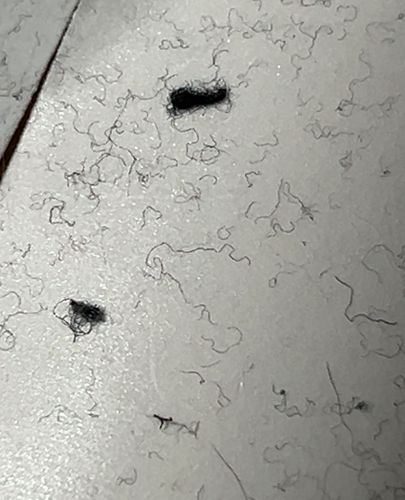Case-bearing Clothes Moth (Larva)
Scientific Name: Tinea pellionella (larval stage)
Order & Family: Lepidoptera, Tineidae
Size: Larvae typically measure 10-15 mm (0.4-0.6 inches) in length, enclosed within their silken case.

Natural Habitat
Indoors, particularly in dark, undisturbed areas like closets, attics, under furniture, or in storage containers where textiles are present. Also found in museums, warehouses, and homes.
Diet & Feeding
Natural fibers, including wool, fur, silk, felt, feathers. They also feed on lint, dust, and occasionally synthetic blends if mixed with natural fibers.
Behavior Patterns
Larvae prefer dark, undisturbed areas. They are active during feeding and grow by molting. They can spin silk cocoons to pupate and eventually emerge as adult moths. Adult moths are typically poor flyers and are more interested in reproduction than feeding.
Risks & Benefits
Potential risks include significant damage to clothing, carpets, upholstery, and other items made of natural fibers, leading to economic loss. They do not pose health risks to humans. There are no notable benefits in an indoor setting.
Identified on: 8/26/2025